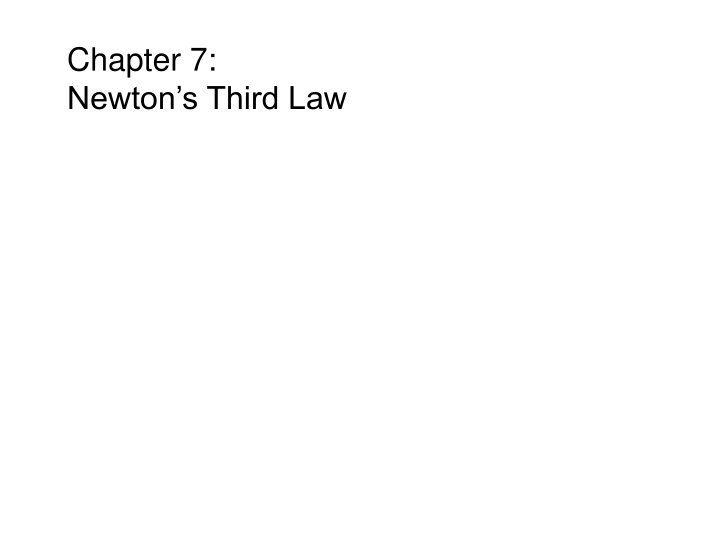
Physics Problems: Newton's Laws and Tension Calculations
Explore various physics problems related to Newton's laws, tension calculations, and force interactions. Solve scenarios involving objects on a table, collisions between cars, mobiles at an art museum, and more. Understand concepts such as equal and opposite forces, friction, and mass interactions in these engaging scenarios.
Uploaded on | 0 Views
Download Presentation

Please find below an Image/Link to download the presentation.
The content on the website is provided AS IS for your information and personal use only. It may not be sold, licensed, or shared on other websites without obtaining consent from the author. If you encounter any issues during the download, it is possible that the publisher has removed the file from their server.
You are allowed to download the files provided on this website for personal or commercial use, subject to the condition that they are used lawfully. All files are the property of their respective owners.
The content on the website is provided AS IS for your information and personal use only. It may not be sold, licensed, or shared on other websites without obtaining consent from the author.
E N D
Presentation Transcript
Chapter 7: Newton s Third Law
Car B is stopped for a red light. Car A, which has the same mass as car B, doesn t see the red light and runs into the back of B. Which of the following statements is true? 1. B exerts a force on A but A doesn t exert a force on B. 2. B exerts a larger force on A than A exerts on B. 3. B exerts the same amount of force on A as A exerts on B. 4. A exerts a larger force on B than B exerts on A. 5. A exerts a force on B but B doesn t exert a force on A.
Newtons Third Law (standard): For every force, there is an equal and opposite force. Newton s Third Law (as per our text): Every force occurs as one member of an action/reaction pair of forces. The two members of an action/reaction pair act on two different objects. The two members of an action/reaction pair are equal in magnitude but opposite in direction. i.e. Fab = - Fba.
Boxes A and B are sliding to the right across a frictionless table. The hand H is slowing them down. The mass of A is larger than the mass of B. Rank in order, from largest to smallest, the horizontal forces on A, B, and H. 1. FB on H = FH on B = FA on B = FB on A 2. FB on H = FH on B > FA on B = FB on A 3. FB on H = FH on B < FA on B = FB on A 4. FH on B = FH on A > FA on B = FB on A
Which exerts more force on the other? 1. You exert more force upon the Earth. 2. The Earth exerts more force upon you. 3. You exert just as much force on the Earth as the Earth does on you.
7.17. A mobile at the art museum has a 2.0kg steel cat and a 4.0kg steel dog suspended from a lightweight cable, as shown in the figure . It is found that T2 = 29N when the center rope is adjusted to be perfectly horizontal. What is the tension in the rope 3? What is the angle of rope 3?
7.41 The 1.0 kg physics book in figure is connected by a string to a 500 g coffee cup. The book is given a push up the slope and released with a speed of 3.0 m/s. The coefficients of friction are s=0.50 and k=0.2 . How much further up the ramp does the physics text book go?
You have two masses. You are given the mass of m1 and m2. m1 What is the acceleration of block 1. m2
